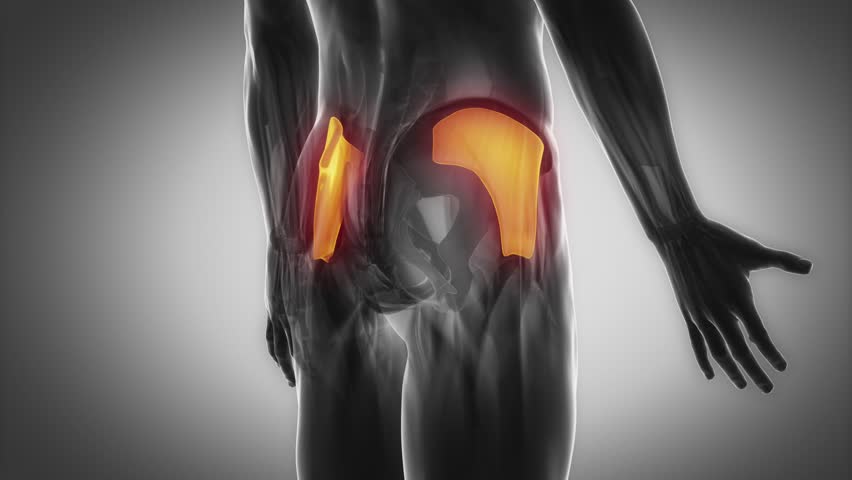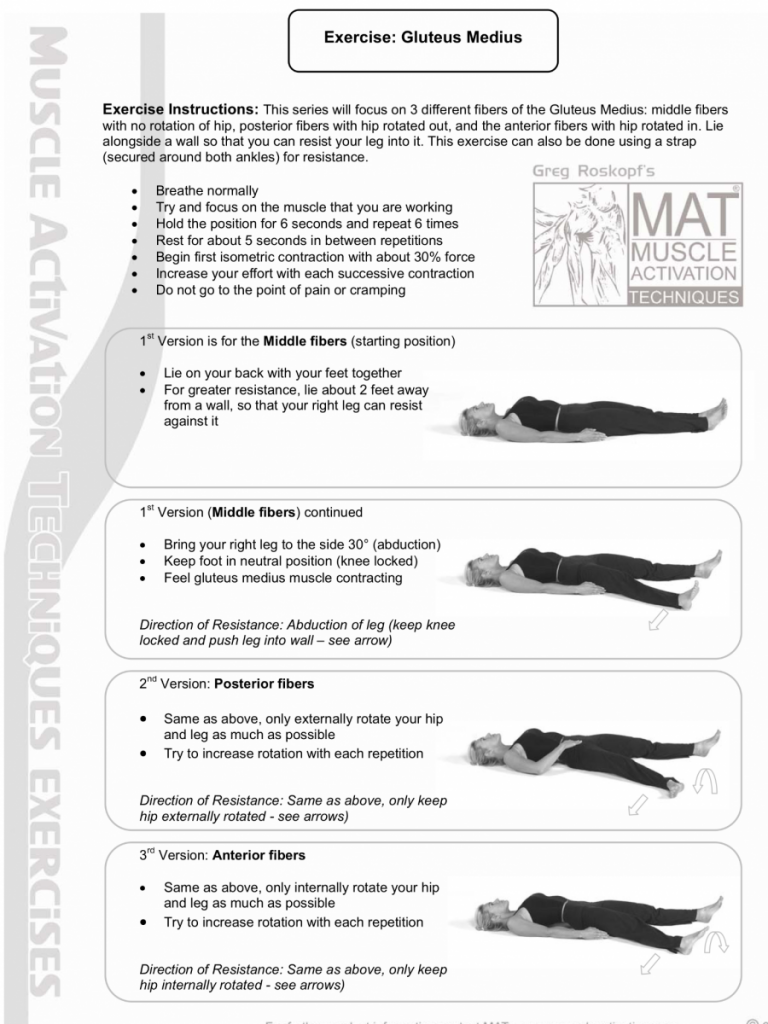In this post I’ll show you the best exercise to activate your gluteus medius muscle.

Weakness in the gluteus medius (GM) has been associated with many injuries including ITB friction syndrome, patellofemoral (knee) pain and even ankle instability.
Most exercises that target GM are usually isotonic, meaning the muscle is either shortening or lengthening. This isn’t necessarily the best way to improve a muscle’s ability to contract.
I spent a significant amount of time in the early part of my career attempting to coach my clients through exercises like the clamshell with minimal improvement. Merely using a muscle is not the same as improving its ability to generate and sustain a contraction.
Incorporating isometrics has improved outcomes for my clients. This is because isometrics have the potential to improve the communication between the muscle itself and the central nervous system.
So what are isometrics?
Isometrics are muscle contractions without movement. Performing them in the muscle’s shortened position will usually provide benefit throughout the muscle’s range.
Not only will you feel the difference, you will see the difference as your range of motion improves.
Start in the position shown below. Slowly abduct the target side leg without moving your pelvis.

Use the middle fibres version to begin with. This is achieved by ensuring your knee is pointing towards the ceiling throughout.
Place a kettlebell or something similar around the outside of your lower leg on the target side. This will give you something to push into.
With no more than 30% of your available strength, push out into the kettlebell as if trying to take your leg further to the side.
You should feel your GM contracting as you do so. Hold for 6 seconds and then relax.
Bring the leg back to the centre position, rest for 5 seconds before slowly sliding it out to the side again. You may need to move the kettlebell further out as you gain more range of motion.
Repeat this process a further 5 times resulting in 6 sets of 6 second pushes.
Congratulations! You have just improved the function of your gluteus medius.
Summary
Performing an exercise that in theory works a particular muscle is not the same as ensuring it does.
Precision isometrics produce outstanding results because they are accurate and improve the communication between the muscle and the central nervous system.
For a post on how to activate your Glute Max go here.